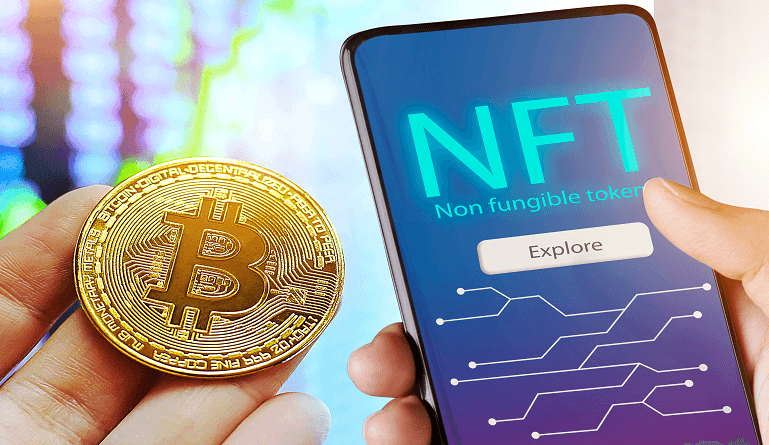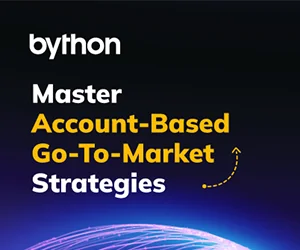The rise of blockchain technology and the metaverse indicates that we will soon have rich VR worlds that allow users with normalized interactions in an immersive environment, nearly reproducing the dynamics of the real world. Property ownership is a fundamental element of real-world economies and societies. This extends from real estate and land ownership to personal property and durable goods.
As a matter of fact, it is our capacity to own non-replaceable things (i.e., products that cannot be substituted) that lets us express oneself and much more clearly establish our identity. How might this be recreated in a virtual environment such as the metaverse? Non-fungible tokens or NFTs accomplish this. They provide consumers irreversible ownership rights for products that do not exist physically.
What is a Non-Fungible Token and its Working?
To comprehend what an NFT is, we must first comprehend its underlying technology, namely blockchain.
The term “blockchain” refers to a decentralized digital ledger comprising a growing collection of entries or blocks that are linked by a cryptographic hash. A blockchain is safe (each block is secured by cryptography) and immutable, meaning that you cannot edit the records that have already been included in the blockchain, and any modification will be logged as a new record.
Blockchain is utilized to store sensitive information, such as financial transaction details. The most prominent use case for blockchain is cryptocurrencies, decentralized and generally fraud-resistant money.
A non-fungible token (NFT) is similar to bitcoin in that it is stored on the blockchain, but it cannot be exchanged. Hundreds of units of cryptocurrency will have the same value and may be exchanged for one another, exactly like real-world currencies.
In comparison, NFTs are each allocated a distinct value. An NFT cannot be substituted by another NFT, making it an excellent category of durable assets. Simply expressed, you may have digital art, digital clothing, digital gaming equipment, digital real estate, etc., via NFTs, and each of these objects would have its own valuation.
Multiple frameworks exist across diverse networks for the generation and distribution of non-fungible tokens. ERC-721 is the predominant standard for creating non-fungible tokens for digital collectibles. ERC-1155 is an enhanced standard beyond ERC-721, enabling smart contracts to support both fungible as well as non-fungible tokens.
Key Features of NFT
An NFT or non-fungible token is:
- Interoperable across blockchain platforms: Using a decentralized bridge or centralized custodian services, NFTs may be exchanged, bought, or sold across several DLTs.
- Indivisible (cannot be shared): NFTs have traditionally proven unmatched in terms of their utility. An airline ticket, for instance, cannot be bought and used in parts; it must be acquired in its entirety since only one person may occupy each seat.
- Unique in its nature: NFTs are also distinct since no two NFTs are ever identical – they cannot be exchanged. Each NFT’s metadata is an immutable record that serves as its certificate of authenticity.
- Rare: NFTs might well be scarce, which would be one factor influencing their value. Although developers have the ability to create however many assets as they choose, they also have the ability to restrict the quantity of NFT for scarcity.
- Owned by an identifiable entity: NFTs exist within a DLT inside a corresponding account. The original developers of the NFT own the private key of the account in which the NFT resides and have the ability to transfer it to any account.
- Transparent in its transactions: Given that publicly distributed ledgers are decentralized and irreversible, with records of token issue, transfer, and activity that can be publicly confirmed, consumers may trust and verify the legitimacy of a particular NFT.
Why Are NFTs so Important in the World of Crypto?
In a virtual world, non-fungible tokens are very important since they offer the very first acceptable solution to digital property ownership. Photos, movies, music, art, and the like have always had a digital avatar, but they have always been replicable, and there has never been a true “scarcity” that determines value.
In terms of value, a digital reproduction of a Van Gogh can’t possibly compete with the original artwork or even with a high-quality, physical print.
Inside the virtual world, NFTs establish the idea of scarcity, resulting in greater demand than supply. NFTs that are unique may sell for thousands or even billions of dollars, since their owners are assured of their exclusivity and irreversible worth. In the context of VR environments, NFTs provide trade and commercial opportunities inside the metaverse.
The Role of NFTs in Commercialization
The metaverse is a massive immersive environment in which people engage with their virtual surroundings using VR technology. It is an ecosystem containing venues for gaming, learning, events, content consumption, and collaboration, among others. Without non-fungible tokens, virtual land sales would not be able to contribute significantly to metaverse profitability.
A portion of virtual land or a “parcel” in the metaverse is sold as a non-fungible token, and the buyer has complete control over the property. NFT real estate may be rented for events, utilized to construct VR structures, or auctioned for a profit.
NFT collectibles have a function in marketing as well. Merchandising has long been a popular strategy with brand marketers, and NFTs provide the same capacity in a virtual environment. Instead of real collectibles, businesses may create 3D things that are offered as collectibles to consumers and investors. Nike has even acquired a studio for crypto collectibles that will aid in the development of branded NFTs.
Inside the metaverse, in-game transactions might be made using NFTs, which would provide purchasers real ownership rights over the purchased item. They would maintain these privileges even after leaving the game, deleting their account, relocating to a new gaming environment, etc. NFTs will render in-game purchases more lasting and, therefore, more desirable.
Moreover, in Web 3.0 and the metaverse, NFTs are vital for the artist and programmer marketplaces. It offers a stable income stream and assures that VR developers and content architects are justly compensated for their work. This will stimulate more adoption and engagement in the metaverse economy over time.
Using the same ideas, NFTs may operate in augmented reality (AR) in addition to virtual reality (VR). Here, rather than a 3D VR item, the NFT purchaser may possess a 3D AR object, like a hologram.
Pros and Cons of NFTs, with Examples
The greatest advantage of NFTs is that they democratize the generation of value via digital object creation. The only requirement for users is to produce a work of digital art or an AR/VR product deserving of acquisition.
Common NFT categories include in-game consumables, digital pictures, domain names, art, entertainment, trading cards, and VR environment components such as virtual land or structures. Then, these NFTs may be listed on an NFT marketplace such as OpenSea, WazirX, Crypto.com NFT, and many others. NFTs, such as the digital picture named “Everydays: the First 5000 Days,” which was acquired for a record $69.3 million, could command millions of dollars.
However, a possible disadvantage of NFTs is that rights of ownership are restricted in comparison to conventional trading. For instance, after the digital artwork has been acquired, it cannot be modified. For this reason, the market for NFTs continues to be a developing, highly volatile one with tremendous promise but also complex and often, worrisome risks.
NFT, like cryptocurrency, is one of the most prominent applications of blockchain technology. It is important to know the meaning of NFT and its importance, and not get spooked by any challenges that may come along with it, similar to the potential challenges that await the cryptocurrency sector in 2023.







